
Spend enough time with medieval manuscripts and you wind up wishing their early readers had been a bit more forthcoming in identifying themselves and indicating how they used their books, preferably in the flyleaves and margins of the selfsame books. Early inscriptions may sometimes offer tantalizing glimpses of a reader’s background (see our earlier post on the subject), but in many more cases we have to extrapolate a manuscript’s origins or early use from its physical components, style of script and decoration, and assortment of contents.
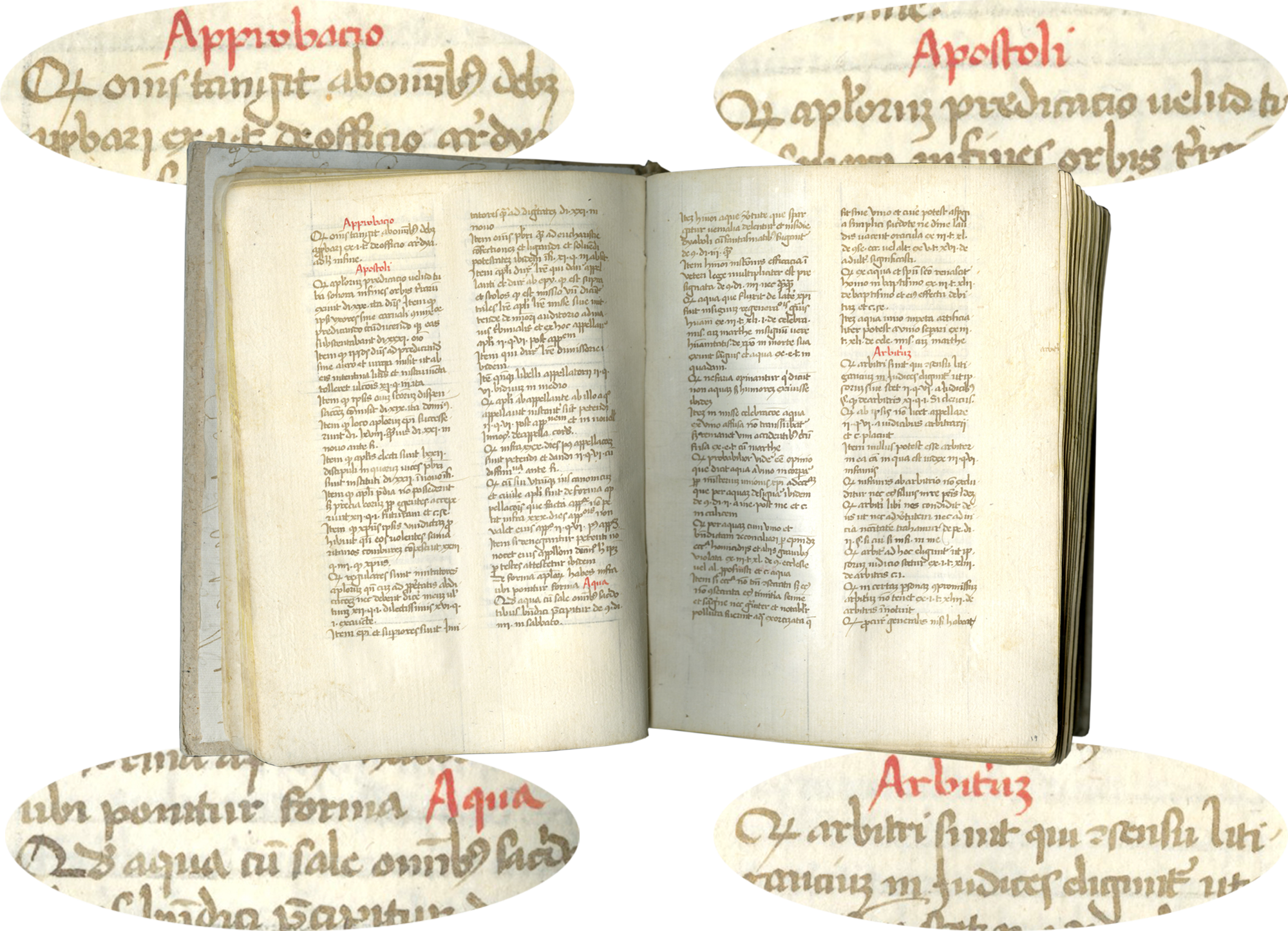
Entries on approbation (“Approbacio”), apostles (“Apostoli”), water (“Aqua”), and judgment (“Arbitrium") in a legal reference book, the Margarita Decreti et Decretalium of Martinus Polonus, TM 642, ff. 18v-19, Italy, c. 1425-1450
Not so in the case of this manuscript above! A legal concordance, this reference book directs readers to passages on specific legal topics within two essential canon law texts of the Middle Ages, Gratian’s Decretum and the Decretals of Gregory IX. An obliging early reader has left some very helpful clues as to his location, his occupation, and how he may have used this popular text – and the conclusions aren’t necessarily what you’d expect.
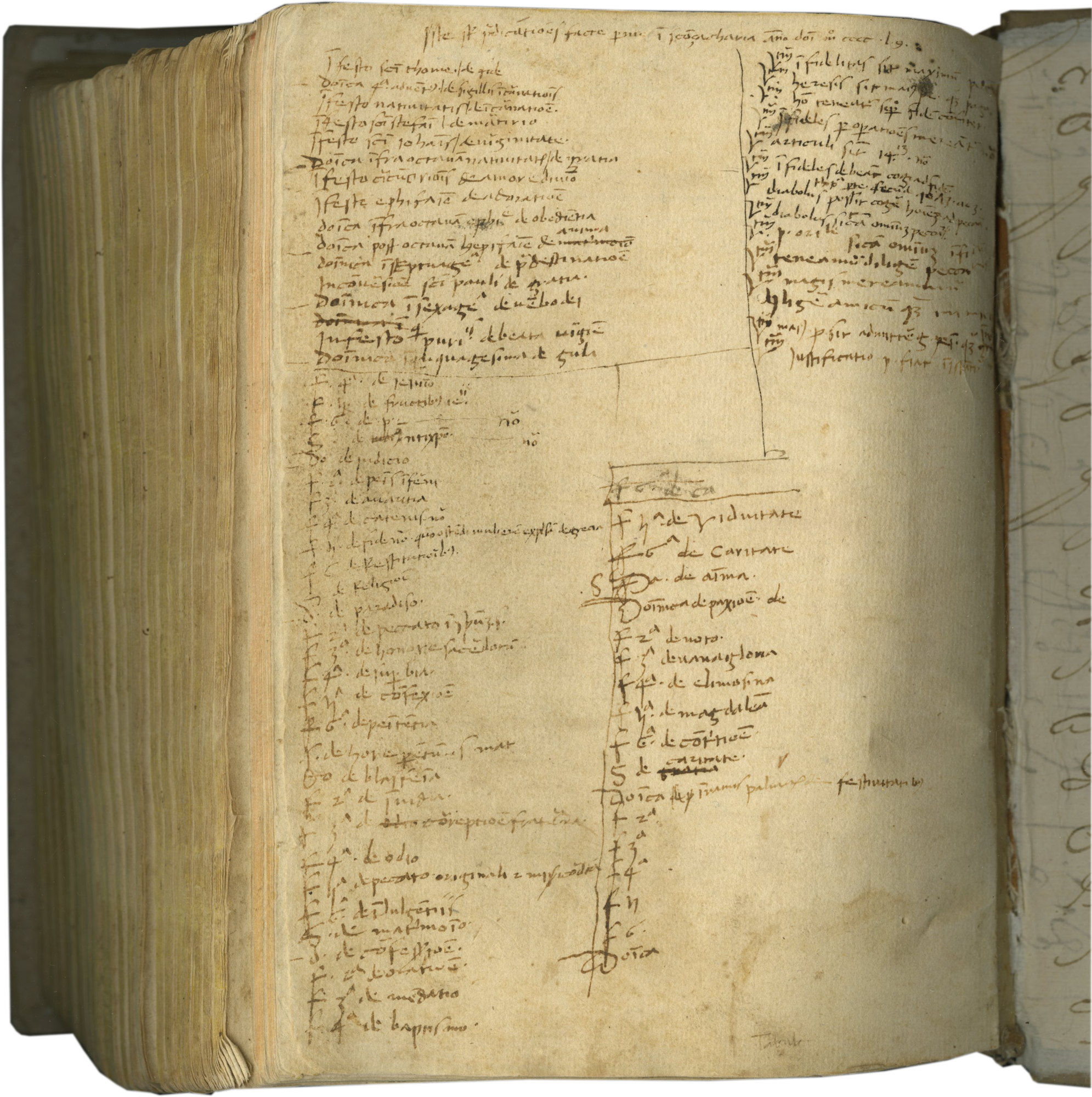
Additions made by a fifteenth-century reader, TM 642, f. 261v
Several leaves were originally left empty at the end of this manuscript. On this final leaf, a fifteenth-century user has taken advantage of this blank space to record his preaching activities in 1459 in several stints. He has devoted about three quarters of this page to listing in Latin the subjects of the sermons he preached on specific days, beginning in December and extending well into the Lenten season.
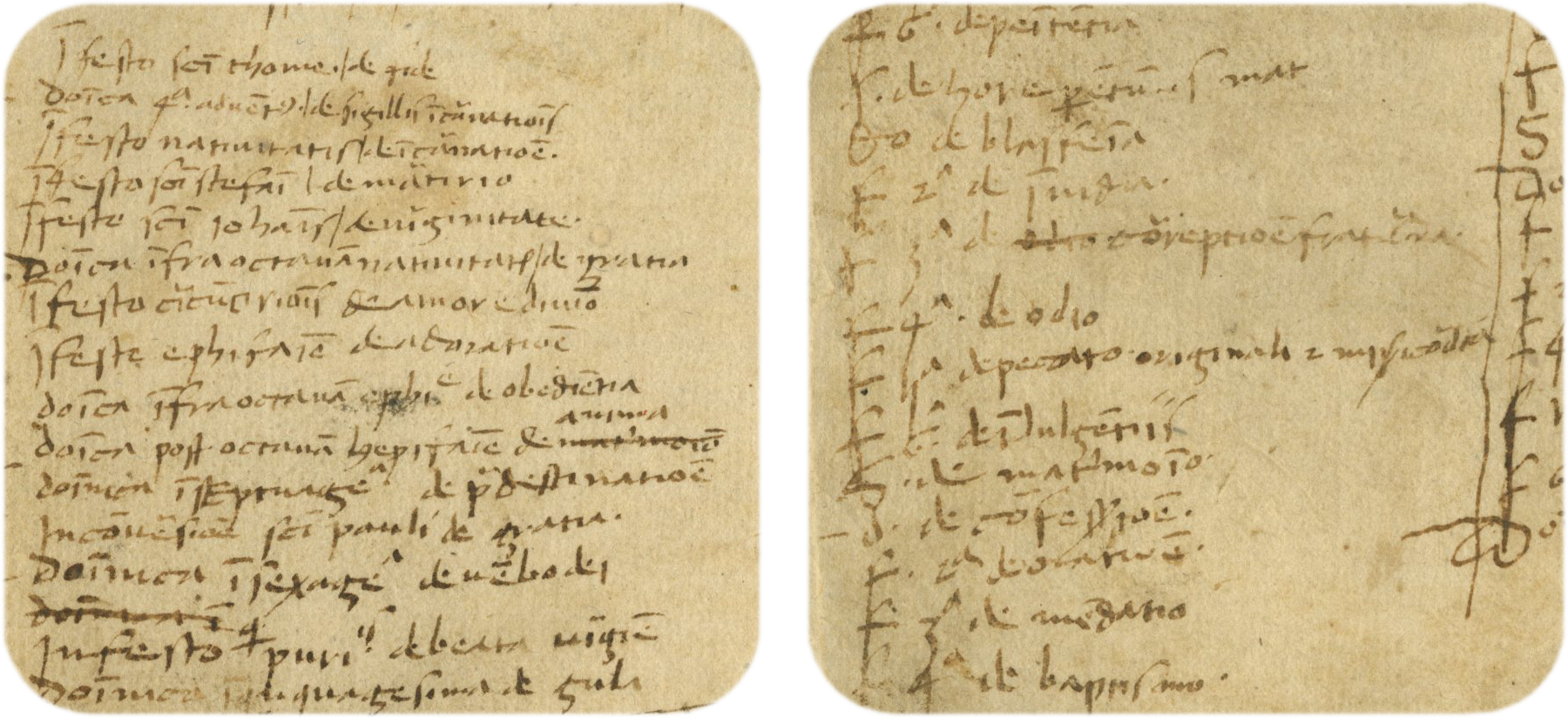
Details of TM 642, f. 261v
As you can see here, for example, his list begins by noting that he preached on the feast of Saint Thomas the Apostle, celebrated on 21 December, on the subject of faith (“de fide”), an appropriate, if not particularly surprising, choice for the feast of the original ‘doubting Thomas.’ Further sermon topics for the Christmas season include divine love, obedience, virginity, and grace (a repeat topic, no less!). In several cases, the preacher appears to have changed his mind or misremembered a topic, hence the corrections visible above.
This list on its own is remarkable, a rare survival of an ephemeral kind of record. What makes it an even more exciting find, though, is that the preacher has given a place and a date for his activities. We know when he delivered these sermons because he has told us at the top of the page: “These are the sermons made by me in San Zaccaria in the year of our Lord 1459.”

This Latin inscription reads, “Iste s[un]t p[re]dicatio[n]es facta p[er] me i[n] s[anc]to çacharia a[n]no do[min]i m[illesim]o cccc. l. 9,” TM 642, f. 261v (detail)

Façade of San Zaccaria in Venice, with details of the inside, the "flooded" ninth-century crypt, and the famous San Zaccaria Altarpiece, painted by Giovanni Bellini in 1505
San Zaccaria was the oldest and most distinguished convent in Venice and, by the end of the Middle Ages, among the wealthiest as well. Hailing from Venice’s patrician families, the San Zaccaria nuns were aristocratic patrons of the arts, and they were well-educated, literate in Latin.

San Zaccaria was an important Venetian house. Here Francesco Guardi depicts the Venetian doge’s annual Easter procession to the San Zaccaria church in his Procession of the Doge of Venice to San Zaccaria, 1775-1780, Paris, Louvre
These nuns were also fiercely independent. In the early sixteenth century, they protested reformers’ efforts to impose strict enclosure (that is, to enforce a stricter separation from the outside world) by appealing to Venetian and ecclesiastical authorities – and by throwing stones. (They ultimately failed, though some nuns would later go to great effort to flout enclosure, breaking down walls to admit lovers, for example.)
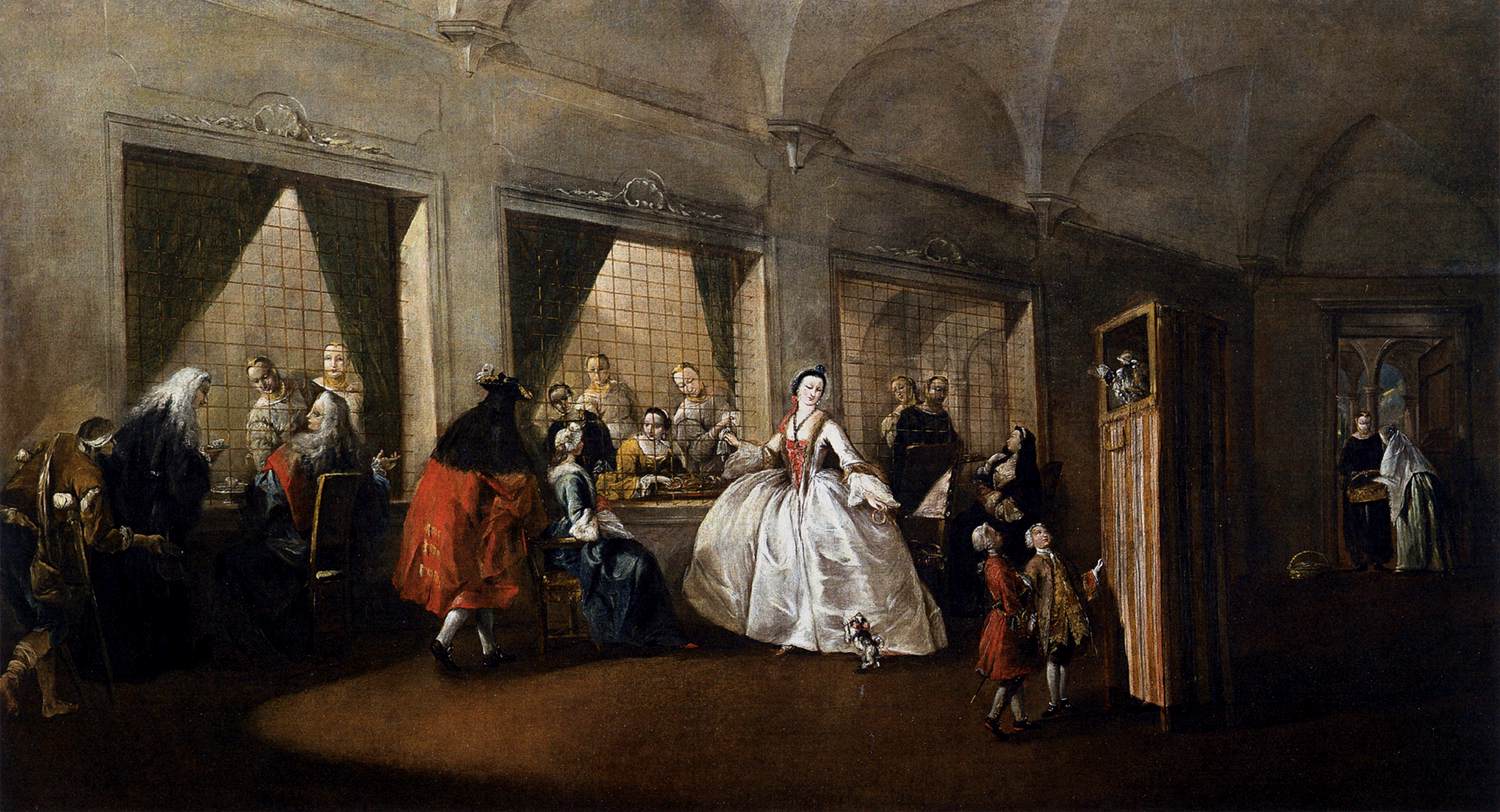
San Zaccaria nuns meet with visitors from the outside world in their parlor, which officials had unsuccessfully attempted to close at the beginning of the sixteenth century, in Francesco Guardi’s Parlor of the Nuns at San Zaccaria, 1750, Venice, Ca’ Rezzonico
It may be that this manuscript belonged to the nuns of San Zaccaria; they would certainly have been able to read it, and nuns’ ownership of canon law texts like this one has been documented elsewhere. Beyond this, the added list of sermons tells us that a preacher had access to this book in 1459. What’s more, many of his sermon subjects overlap with the topics listed within this reference book.
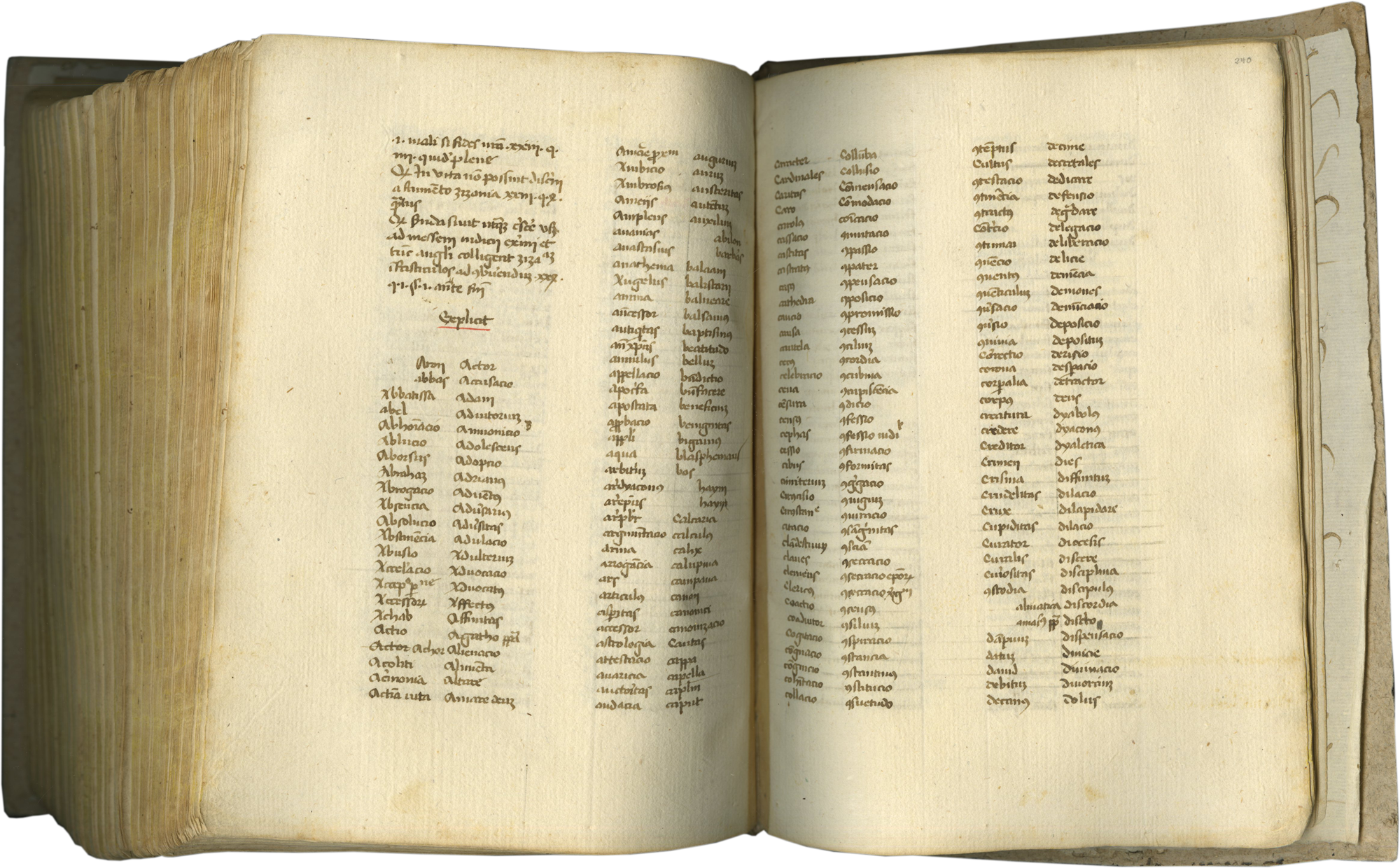
This opening contains the beginning of an alphabetical table of topics included in this concordance, TM 642, ff. 239v-240
Among the canon law subjects listed alphabetically in this opening alone, the soul (“anima”), the Antichrist (“antichristus”), avarice (“auaricia”), baptism (“baptismus”), blasphemy (“blasphemaus”), charity (“caritas”), confession (“confessio”), and contrition (“contricio”) all appear on the list of sermon topics as well.
In other words, this preaching record may appear here precisely because this preacher was an early reader, using this book to craft his sermons.
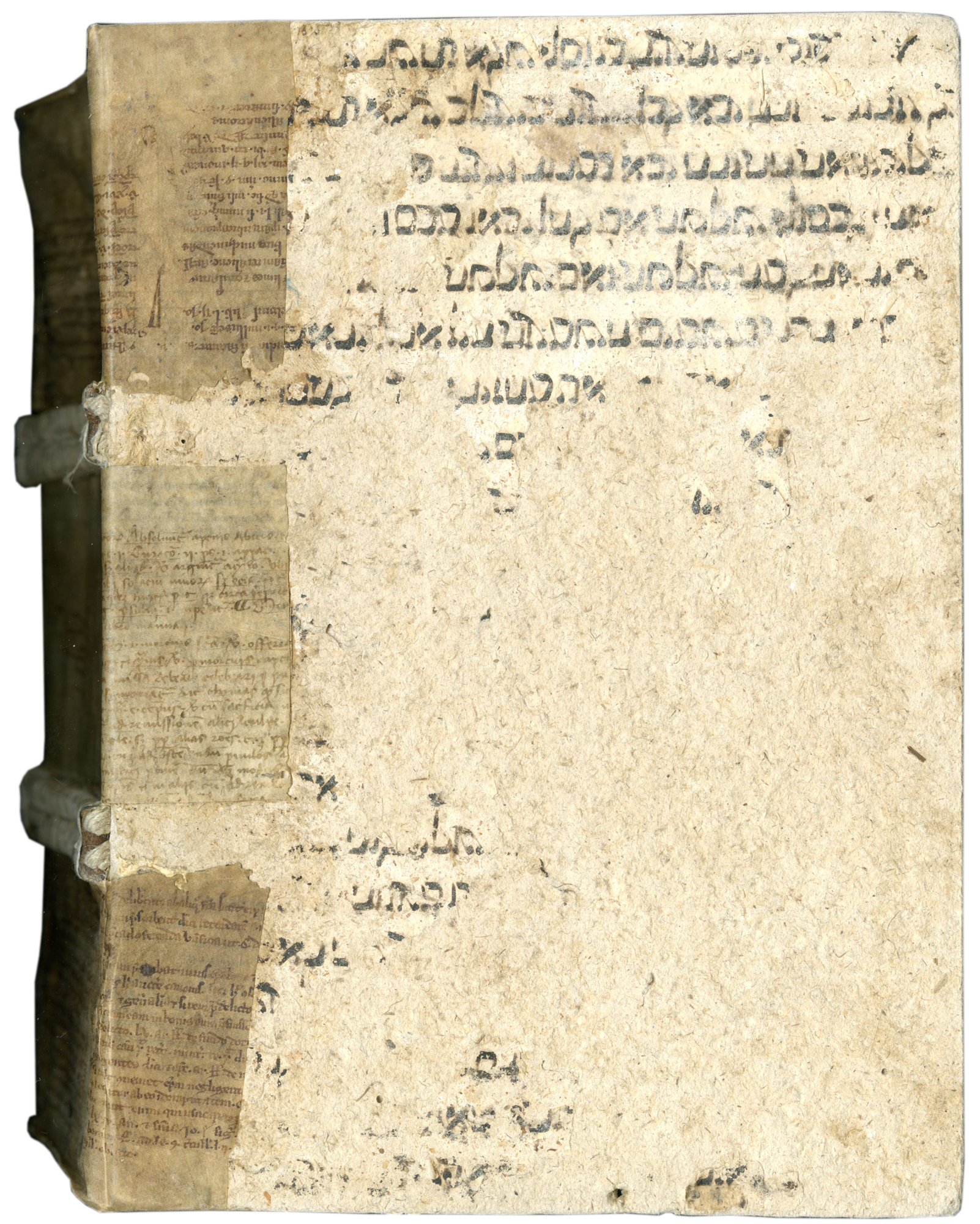
Fragments of the Babylonian Talmud and visible in this volume’s binding, TM 642, upper board
Still, this book preserves some mysteries. We may divine its early use at San Zaccaria from this preaching record, but its fascinating binding – in fragments of the Talmud with seventeenth-century pastedowns from Spanish judicial interrogations – raises some intriguing questions about where (and to whom!) it went from there.
You can now receive periodic blog post updates by submitting your email up above in “Follow Us.”

Spend enough time with medieval manuscripts and you wind up wishing their early readers had been a bit more forthcoming in identifying themselves and indicating how they used their books, preferably in the flyleaves and margins of the selfsame books. Early inscriptions may sometimes offer tantalizing glimpses of a reader’s background (see our earlier post on the subject), but in many more cases we have to extrapolate a manuscript’s origins or early use from its physical components, style of script and decoration, and assortment of contents.

Entries on approbation (“Approbacio”), apostles (“Apostoli”), water (“Aqua”), and judgment (“Arbitrium") in a legal reference book, the Margarita Decreti et Decretalium of Martinus Polonus, TM 642, ff. 18v-19, Italy, c. 1425-1450
Not so in the case of this manuscript above! A legal concordance, this reference book directs readers to passages on specific legal topics within two essential canon law texts of the Middle Ages, Gratian’s Decretum and the Decretals of Gregory IX. An obliging early reader has left some very helpful clues as to his location, his occupation, and how he may have used this popular text – and the conclusions aren’t necessarily what you’d expect.

Additions made by a fifteenth-century reader, TM 642, f. 261v
Several leaves were originally left empty at the end of this manuscript. On this final leaf, a fifteenth-century user has taken advantage of this blank space to record his preaching activities in 1459 in several stints. He has devoted about three quarters of this page to listing in Latin the subjects of the sermons he preached on specific days, beginning in December and extending well into the Lenten season.

Details of TM 642, f. 261v
As you can see here, for example, his list begins by noting that he preached on the feast of Saint Thomas the Apostle, celebrated on 21 December, on the subject of faith (“de fide”), an appropriate, if not particularly surprising, choice for the feast of the original ‘doubting Thomas.’ Further sermon topics for the Christmas season include divine love, obedience, virginity, and grace (a repeat topic, no less!). In several cases, the preacher appears to have changed his mind or misremembered a topic, hence the corrections visible above.
This list on its own is remarkable, a rare survival of an ephemeral kind of record. What makes it an even more exciting find, though, is that the preacher has given a place and a date for his activities. We know when he delivered these sermons because he has told us at the top of the page: “These are the sermons made by me in San Zaccaria in the year of our Lord 1459.”

This Latin inscription reads, “Iste s[un]t p[re]dicatio[n]es facta p[er] me i[n] s[anc]to çacharia a[n]no do[min]i m[illesim]o cccc. l. 9,” TM 642, f. 261v (detail)

Façade of San Zaccaria in Venice, with details of the inside, the "flooded" ninth-century crypt, and the famous San Zaccaria Altarpiece, painted by Giovanni Bellini in 1505
San Zaccaria was the oldest and most distinguished convent in Venice and, by the end of the Middle Ages, among the wealthiest as well. Hailing from Venice’s patrician families, the San Zaccaria nuns were aristocratic patrons of the arts, and they were well-educated, literate in Latin.

San Zaccaria was an important Venetian house. Here Francesco Guardi depicts the Venetian doge’s annual Easter procession to the San Zaccaria church in his Procession of the Doge of Venice to San Zaccaria, 1775-1780, Paris, Louvre
These nuns were also fiercely independent. In the early sixteenth century, they protested reformers’ efforts to impose strict enclosure (that is, to enforce a stricter separation from the outside world) by appealing to Venetian and ecclesiastical authorities – and by throwing stones. (They ultimately failed, though some nuns would later go to great effort to flout enclosure, breaking down walls to admit lovers, for example.)

San Zaccaria nuns meet with visitors from the outside world in their parlor, which officials had unsuccessfully attempted to close at the beginning of the sixteenth century, in Francesco Guardi’s Parlor of the Nuns at San Zaccaria, 1750, Venice, Ca’ Rezzonico
It may be that this manuscript belonged to the nuns of San Zaccaria; they would certainly have been able to read it, and nuns’ ownership of canon law texts like this one has been documented elsewhere. Beyond this, the added list of sermons tells us that a preacher had access to this book in 1459. What’s more, many of his sermon subjects overlap with the topics listed within this reference book.

This opening contains the beginning of an alphabetical table of topics included in this concordance, TM 642, ff. 239v-240
Among the canon law subjects listed alphabetically in this opening alone, the soul (“anima”), the Antichrist (“antichristus”), avarice (“auaricia”), baptism (“baptismus”), blasphemy (“blasphemaus”), charity (“caritas”), confession (“confessio”), and contrition (“contricio”) all appear on the list of sermon topics as well.
In other words, this preaching record may appear here precisely because this preacher was an early reader, using this book to craft his sermons.

Fragments of the Babylonian Talmud and visible in this volume’s binding, TM 642, upper board
Still, this book preserves some mysteries. We may divine its early use at San Zaccaria from this preaching record, but its fascinating binding – in fragments of the Talmud with seventeenth-century pastedowns from Spanish judicial interrogations – raises some intriguing questions about where (and to whom!) it went from there.
You can now receive periodic blog post updates by submitting your email up above in “Follow Us.”


